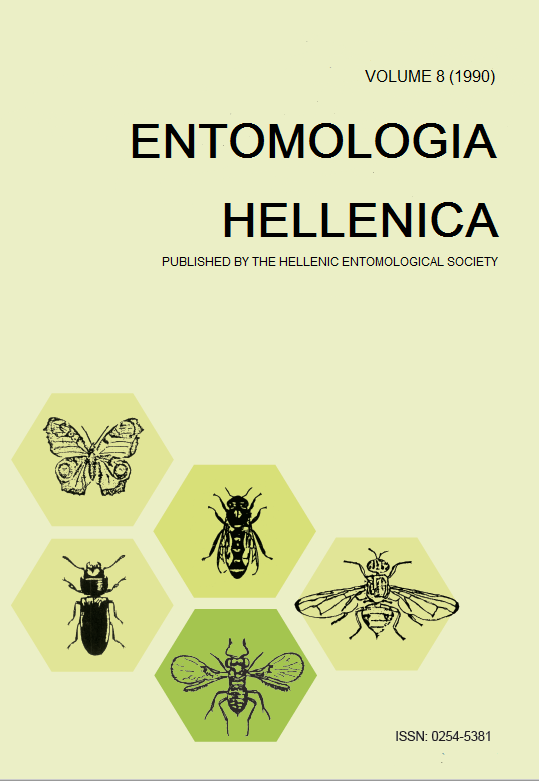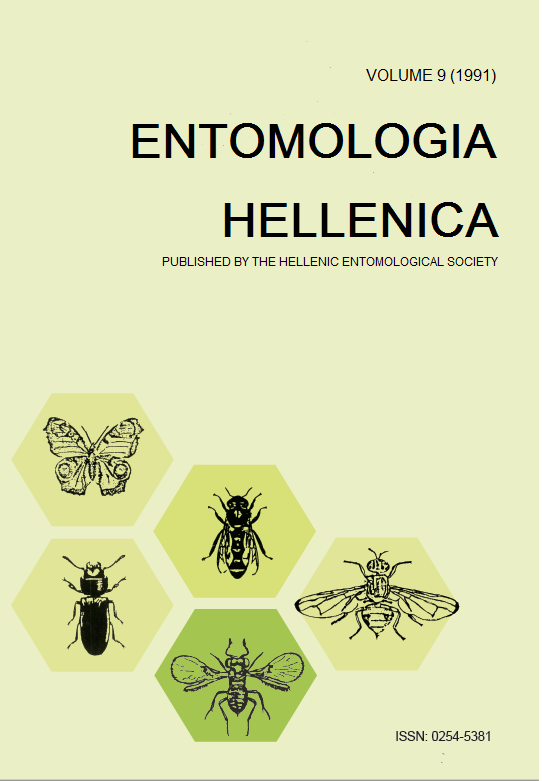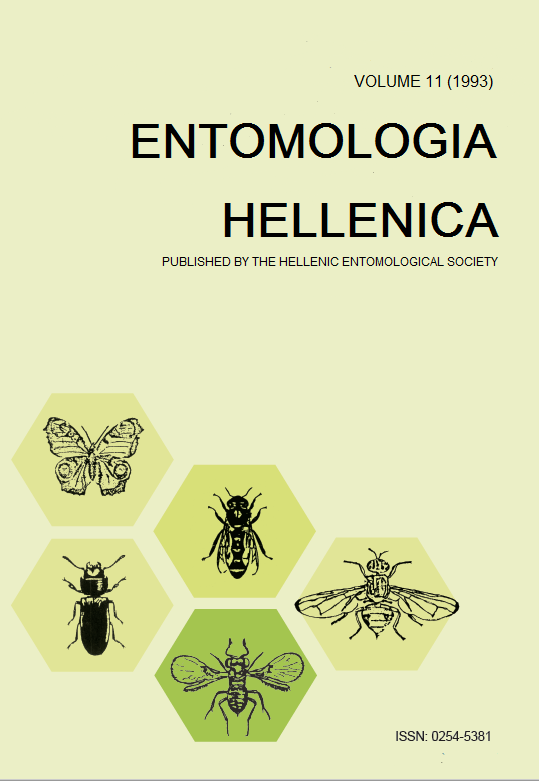Abstract
The potato aphid, Macrosiphum euphorbiae (Thomas), is a highly polyphagous species on secondary hosts feeding on over 200 plant species, but is especially found on Solanum tuberosum L. M.euphorhiae was first noticed on cotton (cv Zeta 2) at Thiva in central Greece in May 1988 during a study on the population dynamics of cotton aphids carried out in a cotton field in the above mentioned region. This species has been recorded on other host-plants in Greece. It resembles Acyrthosiphon gossvpii Mordvilko, a species which also colonizes cotton but has not been recorded yet in Greece. They can be distinguished from each other since the former has shorter siphunculi, hearing a zone of polygonal reticulation on their apices, than the latter. Moreover, it is easily distinguishable from Aphis gossypii Glover, Aphis fabae Scopoli and Aphis craccivora Koch, species which also colonize cotton. A. gossypii is the most important aphid species attacking cotton at Thiva region and has also been recorded previously on cotton by various authors. The species A. fabae and A. craccivora have also been recorded on cotton in Greece. M. euphorbiae was found in the first three samplings that occurred between mid and the end of May when plants were young. From early June and during the rest of the growing season this species was not found in the field. In a total of about 50 plants sampled in each sampling only a few individuals were found. The majority of aphids were alatae, representing 69, 60 and 43 percent of the population at the first. second and third sampling dates, respectively. Alatae started to reproduce on the plants after their alightment, since first and second instar nymphs were present even from the first sampling which took place after the appearance of plants. However, the number of nymphs was kept low during the period M. euphorbiae was present, suggesting that this was possiblydue either to the partial unsuitability of the cotton variety as host or to the effect of the systemic insecticide, phorate which had been applied at sowing, but this needs further investigation. This species was found again in low numbers in another cotton field at Thiva region, from mid May to early June of 1989. The fact that this species was not found from early June onwards in both years reveals that cotton is only a temporary secondary host-plant, possibly not very suitable for aphid development and reproduction. However, cotton may play some role on the population dynamics of M. euphorbiae on subsequent crops and mainly on potatoes, a crop which is widely planted at Thiva region. This might be of particular concern because M. euphorbiae is a vector of several viruses.







